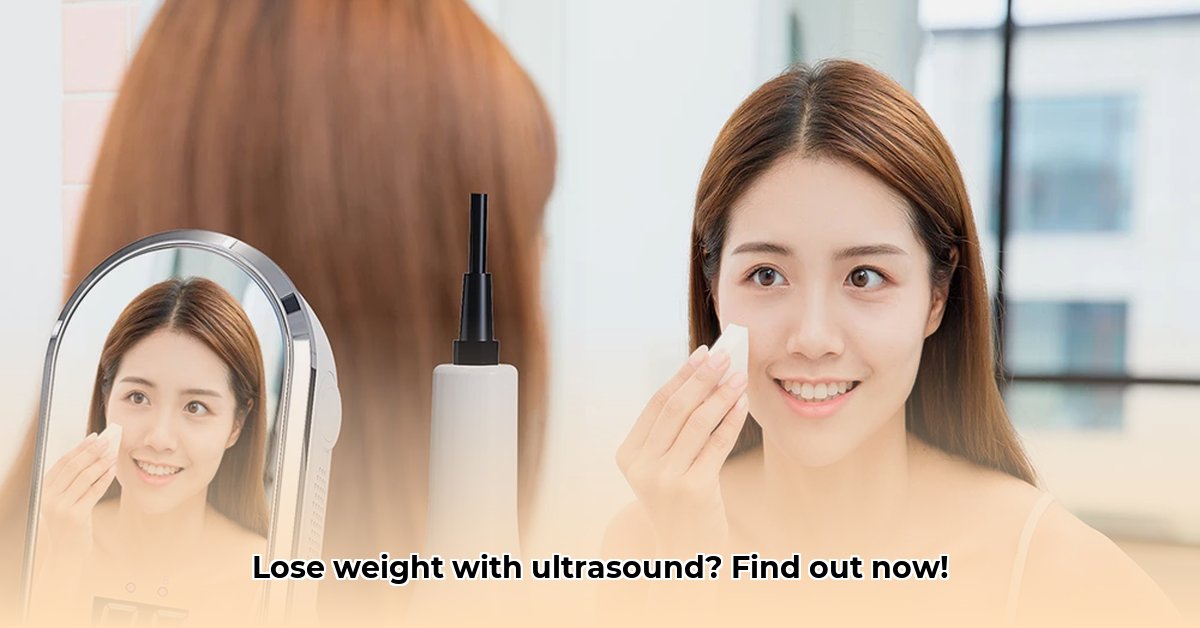
Ultrasonic cavitation, a non-invasive procedure for fat reduction, is gaining popularity. But does it live up to the hype? This comprehensive guide explores ultrasonic cavitation, examining its efficacy, safety, and practicality as a weight-loss method. We'll delve into the science, discuss potential risks, and provide a step-by-step guide to the procedure, empowering you to make informed decisions about your health and well-being.
How Does Ultrasonic Cavitation Work?
Ultrasonic cavitation uses high-frequency sound waves (think of it as very high-pitched sound) to create tiny bubbles within fat cells. These bubbles expand and then implode, essentially breaking down the fat cells. Your body then naturally processes and eliminates these fragmented fat cells through the lymphatic system (your body's drainage system). It's a targeted approach to fat reduction, working from the inside out, without surgery or needles.
What Does the Science Say? Efficacy and Results
Research on ultrasonic cavitation's effectiveness for weight loss presents mixed results. Some studies show significant fat reduction and improved body contouring, while others report more modest effects. This variability likely stems from differences in individual metabolisms, the specific device used, the practitioner's skill, and adherence to post-treatment recommendations.
While some studies suggest noticeable short-term improvements, the long-term effects are still under investigation. It's crucial to understand that ultrasonic cavitation isn't a magic bullet. It's most effective when combined with a healthy diet and regular exercise. Maintaining a healthy lifestyle is key to keeping the weight off.
Is Ultrasonic Cavitation Safe? Potential Side Effects and Precautions
Generally, ultrasonic cavitation is considered safe when performed by a qualified professional. However, potential side effects like mild bruising, redness, tenderness, or swelling at the treatment site are possible. More serious side effects are rare, but selecting a reputable provider is crucial. A pre-treatment consultation is essential to discuss any health concerns and determine your suitability for the procedure. Individuals with certain conditions, such as blood clots or active infections, may not be suitable candidates.
What to Expect During Your Session: A Step-by-Step Guide
- Consultation: This initial step involves a thorough assessment of your health history, goals, and expectations. Your provider will determine if ultrasonic cavitation is appropriate for you. They’ll explain the procedure, discuss potential outcomes, and address any concerns.
- Preparation: The treatment area will be cleaned, and the technician might mark the area for precise ultrasound application.
- Treatment: A specialized ultrasound device is gently moved across the targeted area. You might feel a mild warmth or tingling sensation. Treatment time varies depending on the area treated.
- Post-Treatment Care: Your provider will give detailed instructions, often recommending increased water intake to support the body's natural elimination process. Avoiding strenuous activity for a short period immediately afterwards may also be suggested.
The Cost Factor: How Much Does it Cost?
The cost of ultrasonic cavitation varies significantly depending on factors such as clinic location, provider experience, and the area being treated. Costs can range widely, and packages for multiple sessions are often offered. Remember that insurance usually doesn’t cover this elective cosmetic procedure. Always compare prices from reputable clinics in your area.
Ultrasonic Cavitation vs. Other Non-Invasive Fat Reduction Methods
Ultrasonic cavitation isn't the only non-invasive fat reduction method available. Other techniques like CoolSculpting (cryolipolysis), which uses freezing temperatures to target fat cells, offer different approaches. The optimal choice depends on individual needs, preferences, and budget. Consulting with a healthcare professional can help you compare and contrast these options.
Finding a Qualified Provider: Your Checklist
Choosing a skilled and experienced practitioner is critical. Ask prospective providers about:
- Their experience and training in ultrasonic cavitation.
- The specific technology they use.
- Their safety protocols and any potential risks and side effects.
- Their policies regarding follow-up care.
- Check online reviews to gauge the experiences of other patients.
Maintaining Your Results: Lifestyle Changes Are Key
While ultrasonic cavitation helps reduce fat, it’s not a standalone solution. Maintaining a healthy lifestyle through regular exercise, a balanced diet, and sufficient hydration is crucial for long-term weight management and preserving your results. Think of it as a supporting tool within a holistic, long-term weight loss strategy.
Conclusion: A Balanced Perspective on Ultrasonic Cavitation
Ultrasonic cavitation can be a valuable tool for those seeking non-invasive body contouring. However, it's essential to have realistic expectations. The procedure's effectiveness varies, and maintaining a healthy lifestyle is critical for lasting results. Always consult with your doctor or a qualified healthcare provider to discuss your options and determine if this treatment is suitable for you. They can help you weigh the pros and cons and develop a comprehensive weight management plan.